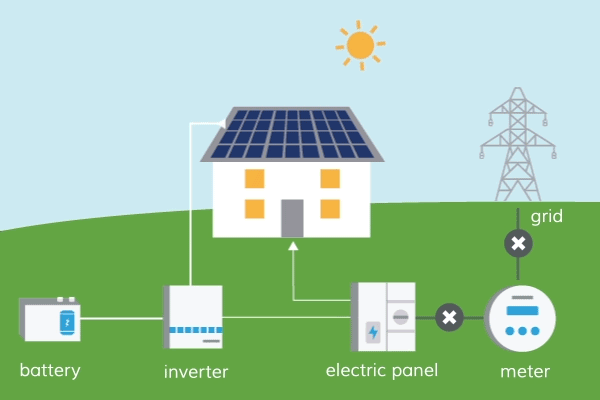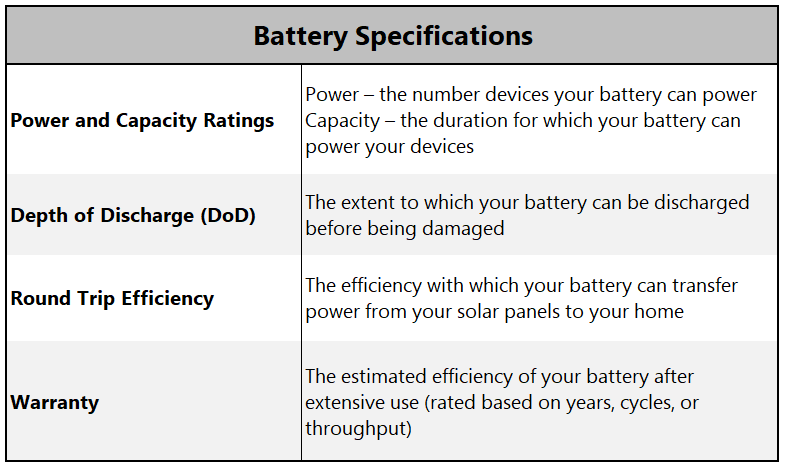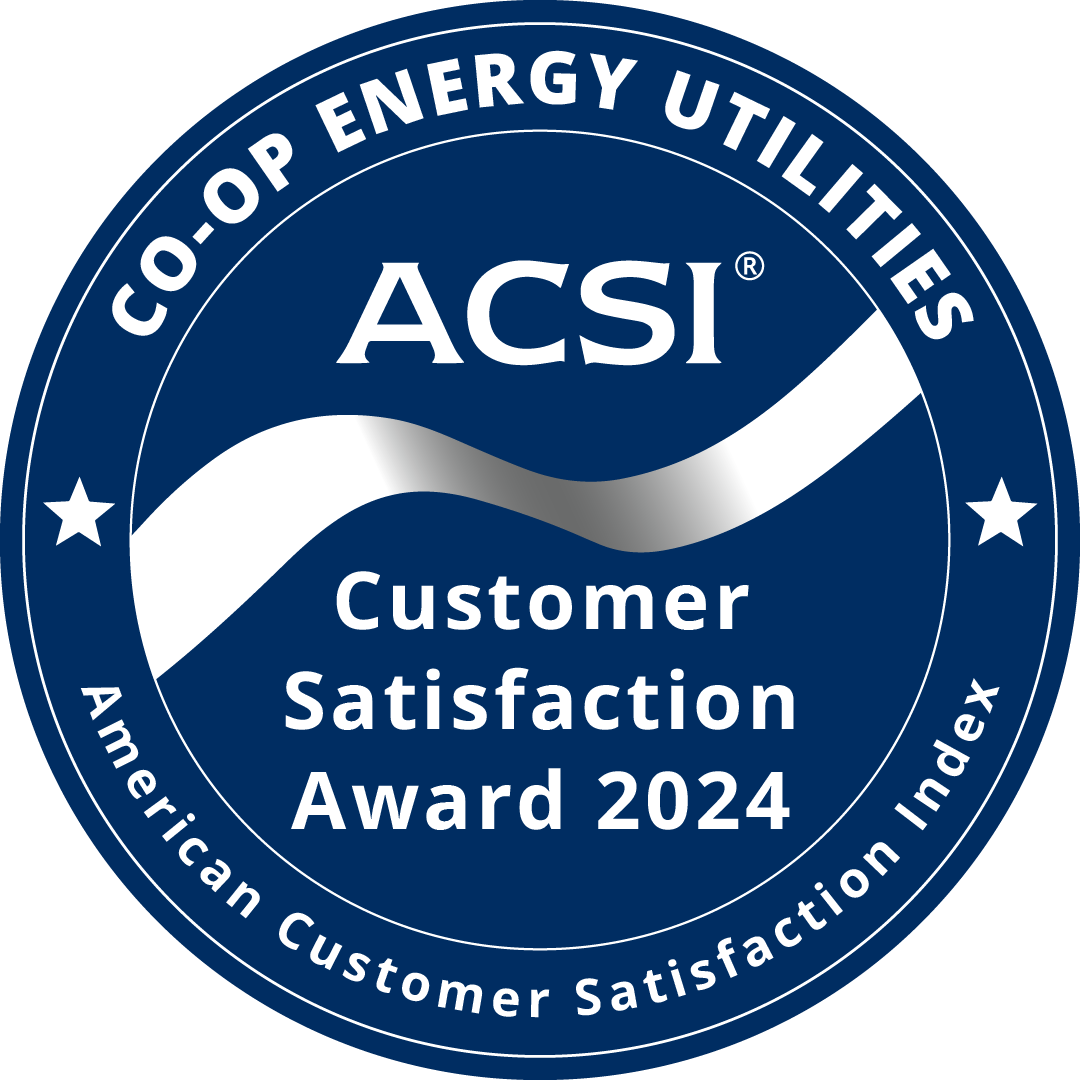
Some of the greatest advantages of a home solar array include cost savings and the ability to produce clean energy for your home. Many homeowners who invest in solar energy also choose to install a battery storage system. On highly productive days, solar panels will store excess energy in batteries. On days when solar output may be limited, such as on overcast or foggy days, the batteries can then be used to continue powering your home.
Solar batteries can also power your home at night. This not only allows you to retain the cost-saving benefits of solar energy but also ensures that your home is operating on clean energy even when solar productivity is limited. See REC’s webpage on renewable energy for more information on solar panel projects.
Installation
When planning to install a home battery storage system, it is important to know whether or not your solar system is “storage ready.” A storage-ready system already has an inverter in place that is ready to incorporate a battery into the solar energy system. The inverter is a piece of equipment that converts power from direct current (DC) to alternating current (AC). Solar panels produce power in the form of DC, however the electrical appliances in your home require AC in order to properly function. The inverter safely turns the DC from your solar panels into AC that is usable in your home. For a storage-ready solar system, the battery installation process will not require many additional pieces of equipment
If your solar array has already been installed and was not originally designed to store energy in a battery, then installation will be slightly more complicated. In this scenario, two options are available:
- An alternating current (AC) coupled solution
- Inverter replacement
With an AC coupled solution, a separate inverter will be installed with your battery. This means that you do not have to replace your solar system’s existing inverter, allowing you to save money. With this, however, your system will have lower energy efficiency over time. When electricity is converted from DC to AC through the inverter, a small amount is lost. Installing an additional inverter for your battery means that these losses will be greater over time.
The alternative option is an inverter replacement (also known as a DC coupled solution), in which your existing solar inverter is replaced with an inverter that can work with battery storage systems. Contrary to the AC coupled solution, an inverter replacement will cost more up front, however it will provide greater energy efficiency long-term. Rewiring your system to incorporate a battery may increase the up-front costs as well. Ultimately, the most cost-effective solution will be determined by your current system and your installer. Inverters typically have a lifetime of 10 years, so if your inverter is ready to be replaced, then you may be able to save some money by installing a new, battery-compatible inverter.
Battery Specifications
Different battery models come with different specifications. It is important to know how these specifications can differ in order to make the right battery choice for your home.
Aside from cost, these four specifications will be main ways in which battery brands and models differ. The usable capacity rating is the total amount of electricity that will be stored in your battery and available for you to use. This determines how long you will be able to power your home from your battery. The power rating is the total amount of electricity your batteries can deliver to your home at one time. A battery with a higher power rating will allow you to power more appliances.


Depth of discharge (DoD) indicates the percentage of battery power that has been used. For example, a battery with a DoD of 70% has used 70% of the electricity it has stored. When a solar battery has a DoD rating of less than 100%, you should avoid discharging more than the rated DoD. For example, the LG Chem RESU 10H has a DoD of 90%. This means that using more than 90% of the battery’s charge could cause damage to the battery. A battery with a high DoD is the best choice, as this will allow you to use more of the battery’s stored electricity before having to recharge it.
Round-trip efficiency represents the amount of power that you can draw from your battery compared to the amount of energy it takes to store that power. If your solar panels send 10kW of power to your battery, but only 8kW of power is stored and can be used, then the round trip efficiency is 80%.
A battery’s warranty will give you an idea as to how long your battery should last. Most solar batteries that experience regular use have a lifetime of roughly 10 years. A warranty will typically include one of the following metrics:
- The number of years the warranty is offered.
- The number of cycles the battery is warrantied for.
- The throughput the battery is warrantied for.
The metrics detailed in these warranties will be coupled with a percentage. The percentage indicates the estimated efficiency of the battery once the criteria of the metrics have been met. For example, if a battery has a warranty of 70% at 10 years, then your battery is predicted to be operating at 70% of its original capacity after 10 years of use.

Cost
Similar to solar panels, the two main costs associated with battery storage systems are installation and purchase. Installation can cost anywhere from $200 to $15,000, depending on the chemistry of the battery. Residential battery projects typically incorporate lithium-ion batteries, which tend to fall between $7,000 and $14,000. Lithium-ion batteries tend to last longer than lead-acid batteries and can store more energy. Below are some examples of batteries and their specifications.
Frequently Asked Questions
You will not be able to completely disconnect from REC, however it is possible to produce enough energy to completely power your home 24/7. In this case you may not need to purchase power from REC, but you will still be required to pay a monthly baseline connection fee. This fee covers the maintenance performed on the electrical grid in your area and provides a secure, secondary power supply in case your solar panels become ineffective. If your solar panels are producing more energy than your home needs, you could participate in REC’s net metering program.
In many cases, a battery storage system can be paired with net metering. When choosing between battery storage and net metering, it is important to understand the benefits of each to determine which is the best fit for your home. See the REC net metering webpage to learn more.
The right battery for you will depend on your intended usage. If you would like to power many devices effectively, then a battery with a high power-rating is ideal. A high-capacity rating will allow you to power a few select devices for a longer period of time.
The price for purchase and installation will vary largely depending on the size, model and location. If you already have solar panels installed, then the price will also vary depending on whether or not your solar panels are storage ready. To get a better idea of solar + storage pricing in your area, see this article from energysage.
If you own a solar battery system, you have the ability to discharge during peak hours. This will allow you to save money when the electrical grid typically experiences high demand.


